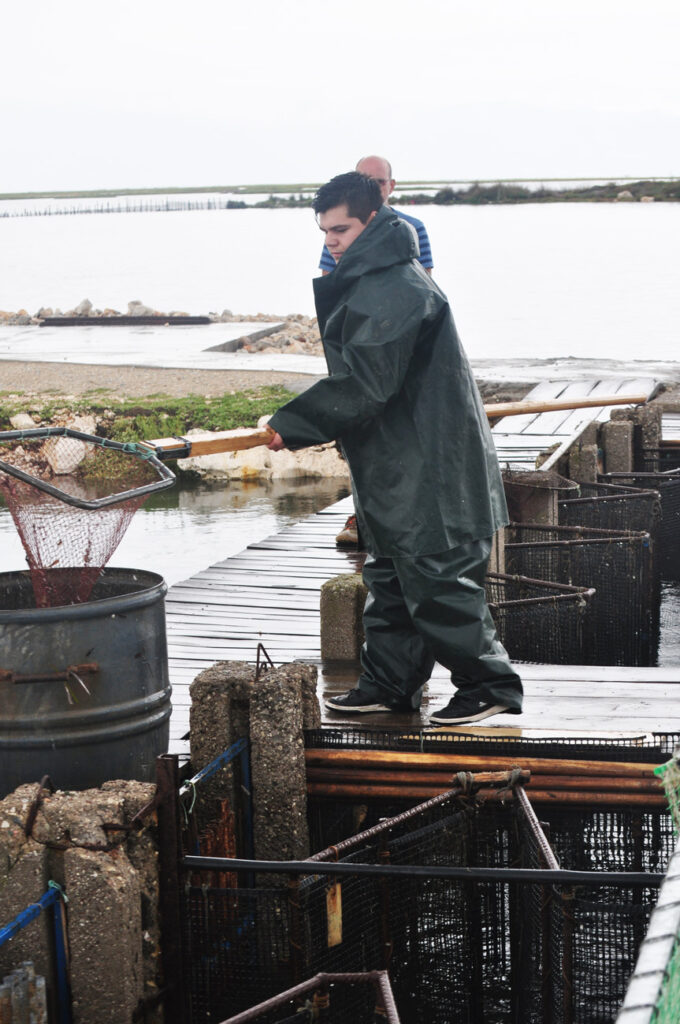Fishing in “divaria”
The divari (or ivari) is a traditional fishing tool of the lagoon and involves controlling the movement of fish by placing fishtraps. It is trapezoidal in shape and, like all fish traps, used to be with fences, i.e. with reeds and stakes nailed to the bottom. Today, the fences have been replaced by a plastic mesh with a rectangular hole measuring approximately 7mm x 15mm, supported on stakes. The smaller of the table bases which is towards the open sea is called the "capsos" and carries the "pires" i.e. the fish catching traps. The larger side is facing towards the inside of the lagoon also has “pires” on the edge and an opening in the middle, the 'kremasi', which is closed by a gate through which the fish enter the divari and are trapped.
Fishery exploitation of the lagoons is based on the movement of the fish. Most fish move against the current of the water so that, in the tide phase, the fish in the lagoon move towards the sea and some of them enter the divari through the open gate of the "kremasi". The fisherman closes the gate of the divari and the fish are trapped inside. They wander around in it, looking for an escape route, eventually becoming trapped in the “pires”. In the ebb phase, the water moves from the lagoon towards the sea, while the fish move towards the interior of the lagoon and escape from the divari, if in the meantime they are not trapped in the front "pires" during the tide phase and in the back "pires" towards the lagoon during the ebb phase and while the "kremasi" is closed. The fisherman shall periodically open the "kremasi" in order to repeat the process.




